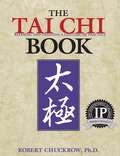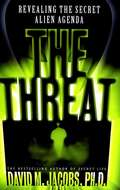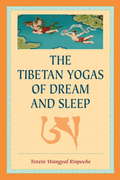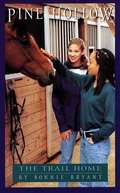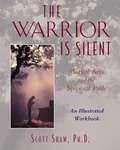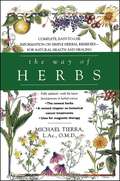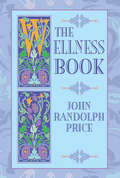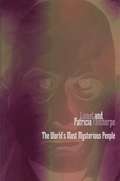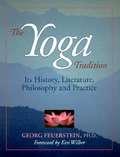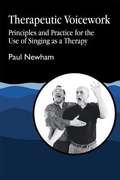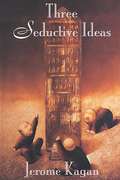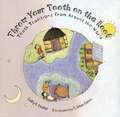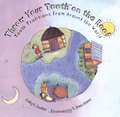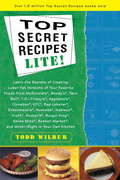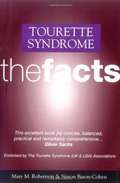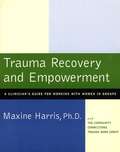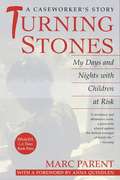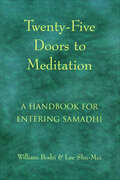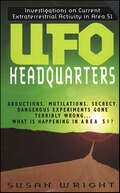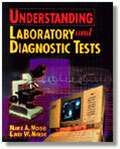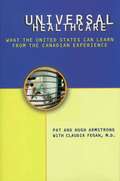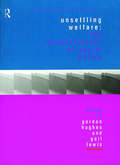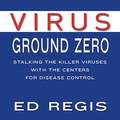- Table View
- List View
The Tai Chi Book: Refining and Enjoying a Lifetime of Practice (Martial Arts-internal Ser.)
by Robert ChuckrowFinalist - 2008 IP's Book Award The Tai Chi Book is a detailed guide for students who've learned a Tai Chi form and want to know more. It also introduces beginners to the principles behind great Tai Chi, and answers common questions that all of us have. The Tai Chi Book shows you how to use Tai Chi to gain strength in your bones, muscles and vital organs, how to improve your balance and flexibility, and how to achieve remarkable vitality. The author also introduces complex elements of Tai Chi, including ways to develop the relaxed strength known as sung, how to cultivate and feel Chi, how to train mindfulness, and a helpful chapter on being a student. In addition, the author explores the debate over Tai Chi breathing patterns, explains in detail proper body alignment, and tells why Pushing Hands is more important than you might think. The Tai Chi Book is your guide to the fullest health benefits of Tai Chi and to higher levels of skill and ability. * Like two books in one-basic and advanced Tai Chi training. * Find out how to choose and relate to a teacher. * Develop remarkable vitality and longevity. * Includes the Cheng Man-ch'ing short form. * More than one hundred photos and illustrations.
The Threat: Revealing the Secret Alien Agenda
by David M. JacobsThe world's foremost academic expert on UFOs and alien abductions provides the first evidence-based explanation of a mystery that has perplexed scientists for decades.Based on more than 700 hypnotic-regression interviews with alien abductees and a Roper survey of 6,000 adults, The Threat reveals why the aliens are here and what they want, explains why their agenda has been kept secret, and exposes their frightening plans for earth and its inhabitants. In a direct, authoritative challenge to researchers who believe the abduction phenomenon is essentially benevolent and spiritually uplifting, Professor David M. Jacobs proves that there is a far more disturbing and potentially dangerous plan underway, with possible alien domination at its core.In this remarkably well-researched and well-written book, Professor Jacob has added a new complexity and depth to our knowledge of the UFO and abduction phenomena. The secret alien agenda revealed here is ominous, but it must be confronted before it is too late.
The Tibetan Yogas of Dream and Sleep
by Tenzin Wangyal RinpocheContains the Tibetan system of dream and sleep yoga practices
The Trail Home (Pine Hollow #2)
by Bonnie BryantCallie's on her way to recovery after the life-threatening accident. Stevie and Carole are focused on helping her. Stevie feels guilty; she was driving the car. Scott on the other hand seems to blame her. Meanwhile, Carole wants to know what Ben is hiding. Will it ruin their friendship? Will Lisa abandon her friends and continue having fun in California on her TV show?
The Warrior Is Silent: Martial Arts and the Spiritual Path
by Scott ShawA master illuminates the spiritual foundations of martial artspractice in this fully illustrated guide.• Presents an overview of the spiritual foundations of the martial arts.• Takes the reader through a well-illustrated series of self-defense techniques that utilize Ki energy.• An essential guide for anyone interested in a spiritually-centered martial arts practice.The Warrior Is Silent presents an overview of the spiritual foundations of martial arts practice in the East and its intimate connection with the perfection of the art itself. In addition, the author, an accomplished martial artist, takes the reader through a well-illustrated series of self-defense techniques that utilize Ki energy. Establishing a balance between the spiritual and physical aspects of the martial arts, The Warrior Is Silent is an essential guide for anyone interested in a spiritually-centered martial arts practice.
The Way of Herbs
by Michael TierraWAY OF HERBS is an essential manual for gaining and maintaining health through a holistic approach, a natural path to well being. It contains complete, easy-to-use information on simple herbal remedies and gives detailed descriptions of more than 140 Western herbs and 31 important Chinese herbs. With interest in natural health remedies and alternatives to Western medicine on the rise, Michael Tierra provides a classic work on herbs and natural healing.
The Wellness Book
by John Randolph PriceThis remarkable book on healing covers topics such as Holistic healing, spiritual preventative medicine, and living the truth of wellness. Learn why sickness, disease, and old age do not exist in the reality of our being. Several healing meditations are included.
The World's Most Mysterious People
by Lionel And FanthorpeDid Rasputin, the mad monk of Tsarist Russia, possess supernatural powers? Who was the mysterious prisoner in the Bastille who has gone down in history as "The Man in the Iron Mask"? Did he possess a priceless secret which Louis XIV desperately wanted to learn? Victorian Britain was terrorized by a weird super-athlete known to the popular press of those days as "Spring-heeled Jack." Was he just an eccentric gymnast, or could he have been an alien? Who or what was the mysterious man known as the Count of St. Germain whose abnormal powers seemed to defy both time and space – and is he still with us today? What strange powers of prophecy did Coinneach Odhar, the famous Brahan Seer, really possess? Was Bérenger Sauniëre, the enigmatic Priest of Rennes-Le-Château, one of the last guardians of a secret older than the Sphinx? Could the sinister Aleister Crowley have been merely a pathetic victim of self-deception and his own inflated ego, or did he really possess magical powers? What amazing secrets did electrical engineer Nikola Tesla control? Gurdjieff – one of the most amazing men of his time – has never been fully understood: what was the true meaning behind his strangely ambivalent messages? Was Madame Helena Petrovna Blavatsky a genius with strange paranormal powers, or merely a charlatan and a sensation-seeker? Francis Dashwood of Medmenham Abbey, leader of a sect of the wildest debauchees who roared their way across the eighteenth century, was an expert in the Black Arts. All of these strange, mysterious, and intriguing characters – and many others – are described, examined, and analyzed in The World’s Most Mysterious People. This is a collection of remarkable and mysterious people, from all ages and places – including our own. Some the authors have met, others were researched carefully from reliable archives. Some are Canadian, others are from the US, the UK, and all over the world. All are mysterious; all are intriguing; all are worth studying. Can anyone learn to use mysterious powers like theirs? To update what a great thinker once said: "The proper study of people is other human beings." And the more mysterious those human beings are, the more we shall learn from studying them.
The Yoga Tradition: Its History, Literature, Philosophy and Practice
by Georg FeuersteinThe author is founder-director of the Yoga Research Center in Northern California and the author of 30 books on yoga. The present volume is a revised and greatly enlarged edition of the author's 1989 work, Yoga: The Technology of Ecstasy .
Therapeutic Voicework: Principles and Practice for the Use of Singing as a Therapy
by Paul NewhamNewham explores both the theory and practice behind the use of voice and singing in expressive arts therapy by drawing together ideas from various disciplines.
Three Seductive Ideas
by Jerome KaganDo the first two years of life really determine a child's future development? Are human beings, like other primates, only motivated by pleasure? And do people actually have stable traits, like intelligence, fear, anxiety, and temperament? This book, the product of a lifetime of research by one of the founders of developmental psychology, takes on the powerful assumptions behind these questions--and proves them mistaken. Ranging with impressive ease from cultural history to philosophy to psychological research literature, Jerome Kagan weaves an argument that will rock the social sciences and the foundations of public policy. Scientists, as well as lay people, tend to think of abstract processes--like intelligence or fear--as measurable entities, of which someone might have more or less. This approach, in Kagan's analysis, shows a blindness to the power of context and to the great variability within any individual subject to different emotions and circumstances. "Infant determinism" is another widespread and dearly held conviction that Kagan contests. This theory--with its claim that early relationships determine lifelong patterns--underestimates human resiliency and adaptiveness, both emotional and cognitive (and, of course, fails to account for the happy products of miserable childhoods and vice versa). The last of Kagan's targets is the vastly overrated pleasure principle, which, he argues, can hardly make sense of unselfish behavior impelled by the desire for virtue and self-respect--the wish to do the right thing. Written in a lively style that uses fables and fairy tales, history and science to make philosophical points, this book challenges some of our most cherished notions about human nature.
Throw Your Tooth On The Roof: Tooth Traditions From Around The World
by Selby B. Beeler<P>What do you do when you lose a tooth? Do you put it under your pillow and wait for the tooth fairy? Not if you live in Botswana! In Botswana, children throw their teeth onto the roof. In Afghanistan they drop their teeth down mouse holes, and in Egypt they fling their teeth at the sun! Travel around the world and discover the surprising things children do when they lose a tooth. <P>Selby B. Beeler spent years collecting traditions from every corner of the globe for this whimsical book, and illustrator G. Brian Karas adds to the fun, filling every page with humorous detail. He perfectly captures the excitement and pride that children experience when a tooth falls out. <P>This title has been selected as a Common Core Text Exemplar (Grades 2-3, Informational Texts)
Throw Your Tooth on the Roof: Tooth Traditions from Around The World
by Selby B. Beeler G. Brian KarasNIMAC-sourced textbook <P><P>What do you do when you lose a tooth? Do you put it under your pillow and wait for the tooth fairy? Not if you live in Botswana! In Botswana, children throw their teeth onto the roof. In Afghanistan they drop their teeth down mouse holes, and in Egypt they fling their teeth at the sun! Travel around the world and discover the surprising things children do when they lose a tooth. Selby B. Beeler spent years collecting traditions from every corner of the globe for this whimsical book, and illustrator G. Brian Karas adds to the fun, filling every page with humorous detail. He perfectly captures the excitement and pride that children experience when a tooth falls out. <P>This title has been selected as a Common Core Text Exemplar (Grades 2-3, Informational Texts) <P>Lexile Measure: AD540L
Top Secret Recipes Lite!
by Todd WilburWith the new health-consciousness sweeping America, many of us feel we can no longer indulge in the tasty but guilt-inducing foods we grew up with. Todd Wilbur, who made a name for himself by allowing us to clone treats such as OreosTM and Outback Steakhouse® Blooming OnionsTM in our own kitchens, now gives us back our cherished foods with reduced fat and calories. Not only does Wilbur enable us to produce lite versions of Cinnabon® Cinnamon Rolls and TwinkiesTM, he shows us how to duplicate our favorite SnackwellTM and Healthy ChoiceTM products. Top Secret Recipes--Lite! includes recipes for 75 new dishes, complete with Wilbur's helpful diagrams, which call for ingredients easily found at the local supermarket. The newest addition to the Top Secret Recipe franchise is sure to make us not only happier, but healthier.
Tourette's Syndrome: The Facts
by Mary M. Robertson Simon Baron-CohenGilles de la Tourette's syndrome (or Tourettes syndrome) is an inherited neuropsychiatric disorder affecting five people inn every 10,000. It is characterized by multiple verbal and motor tic, which occur in bouts many times each day. These can be mild in some cases, but can reach a disabling extent in some sufferers, and can include some upsetting and anti-social behavior, such as involuntary swearing and obscene gestures in others. This book, written by a physiologist and a psychiatrist, who have been researching Tourette's syndrome for many years, explains the causes of the syndrome, how it is diagnosed, and the ways in which it can be treated. It includes a section providing clear answers to some of the most commonly asked questions about the disorder and another chapter devoted to coping strategies for close relatives of people diagnosed as having Tourette's syndrome.
Trauma Recovery and Empowerment: A Clinician's Guide For Working With Women in Groups
by Maxine HarrisThis one-of-a-kind guide serves as a rich and essential resource for mental health professionals working with women whose lives have been shattered by the trauma of sexual, physical, or emotional abuse. The book presents a practical, step-by-step guide to implementing a group recovery program for female trauma survivors.
Turning Stones: A Caseworker's Story
by Marc ParentWhy does an infant die of malnutrition? Why does an eight-year-old hold a knife to his brother's throat? Or a mother push her cherished daughter twenty-three floors to her death? Marc Parent, a city caseworker, searched the streets--and his heart--for the answers, and shares them in this powerful, vivid, beautifully written book. WITH A NEW AFTERWORD BY THE AUTHOR.
Twenty-Five Doors to Meditation: A Handbook for Entering Samadhi
by William Bodri Lee Shu-MeiAn indispensable reference for individuals searching for the meditation technique that is best for them.Twenty-Five Doors to Meditation is the first guide to provide extensive, comprehensive, and detailed information about a variety of meditation methods. Together, William Bodri and Lee Shu-Mei make sense of the seemingly conflicting information that exists today regarding the path to spiritual enlightenment. Each meditation technique is fully described as is the interrelationship between the different paths to enlightenment.The authors show how Buddhist techniques can be explained through Taoist principles, Christian techniques through Hindu principles, and so on. Each meditation technique is designed to help you attain samadhi, the crux of spiritual development. The authors explore the scientific basis behind each technique, developmental stages of accomplishment, and each path’s effectiveness for entering samadhi. Especially useful is an extensive list of recommended references for the further study of individual techniques.
UFO Headquarters: Investigations on Current Extraterrestrial Activity in Area 51
by Susan WrightThe government said it need Area 51 to protect America. They said they needed it for research. Now some say it has all been a terrible lie...In the annals of UFO controversies there has never been a place like this: sixty square miles of desert and scrub just north of Las Vegas, Nevada. Officially known as a U.S. Air Force testing ground, this area has accounted for more UFO sightings and more inexplicable activity than any other in the world. leading experts to dub Area 51 "Earth's unofficial UFO headquarters." Now UFO writer Susan Wright seeks to answer the riddle once and for all, delving into previously secret government documents, drawing on eyewitness accounts, and ripping the veil of secrecy off Area 51 and the research that really goes on there. The result is the most shocking and thoroughly documented UFO book you have ever read, a book that demonstrates that for fifty years the U.S. government has had one overriding policy on Area 51: whenever confronted with suspicions, facts, or photographs-conceal, deny and lie...
Understanding Laboratory and Diagnostic Tests
by Marie A. Moisio Elmer W. MoisioIdeal for instruction in nursing, health information, medical assisting, medical transcription or health unit coordinator programs, this book contains numerous end-of-chapter exercises and case studies to challenge the learner. The most commonly ordered tests are covered, complete with an accurate description of the name and type of test, how the test is performed, indications and contraindications for the test, and most importantly the purpose or diagnostic significance of the test. When appropriate, tests are linked to diagnoses or problems. Many lab books on the market are geared solely for the nurse or technician who must perform the test whereas this book is an excellent resource for any allied health professional who needs a basic understanding of commonly ordered laboratory and diagnostic tests. (health information management,
Universal Health Care: What the United States Can Learn from the Canadian Experience
by Pat Armstrong Hugh Armstrong Claudia FeganThe Canadian health-care system, which guarantees medical care for the entire population without charge at the time it is provided, also allows doctors and patients more choice than the American system about whom to see and what medical procedures to provide. Describing the various mechanisms that make the Canadian system work, this book also highlights the problems of the current US system. In the process, the authors set out to demonstrate how a public, single-payer system can provide high-quality care to many more people at much less cost than the present market-based system.
Unsettling Welfare: The Reconstruction of Social Policy (Social Policy: Welfare, Power and Diversity)
by Gordon Hughes Gail LewisUnsettling Welfare addresses the changing relationship between social welfare, its 'recipients' and the state. In particular, the book explores the direction and the impact of the reforms of the welfare state that took place during the 1980s and 1990s. By focusing on specific fields of social welfare and social control, including health, education, housing, income maintenance, social services and criminal justice, Unsettling Welfare identifies general trends and the ways in which these are manifested.
Virus Ground Zero: Stalking the Killer Viruses with the Centers for Disease Control
by Ed RegisAn acclaimed science writer takes readers behind the scenes at the Centers for Disease Control to tell the story of an engrossing odyssey across the viral frontier.
Visually Impaired Seniors as Senior Companions: A Reference Guide for Program Development
by Alberta L. OrrThe guide provides a framework for the reader to understand the core issues related to aging and vision loss, as well as the needs and capabilities of older visually impaired persons.
Vitamin E: Your Protection Against Exercise Fatigue, Weakened Immunity, Heart Disease, Cancer, Aging, Diabetic Damage, Environmental Toxins
by Ruth WinterThe latest scientific reports show vitamin E as an effective shield against heart disease, cancer, and problems associated with aging. In this important new book, Ruth Winter presents the fascinating history and current scientific excitement about this inexpensive, vital, and formerly unappreciated vitamin. -How the antioxidant effects of vitamin E work to protect the body against disease and aging-How vitamin E helps to build muscle and strengthen the heart-The beneficial effects of vitamin E on the skin-The documented effects of vitamin E for preventing impotence and maintaining fertility-The best ways to incorporate vitamin E into your diet Here is everything you need to know about vitamin E and how medical science has documented its use for maintaining health and vitality.
